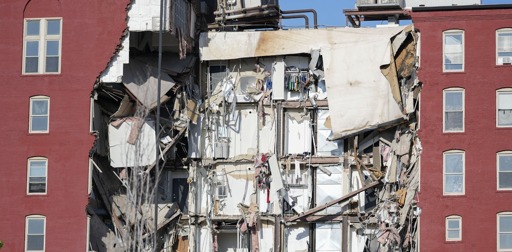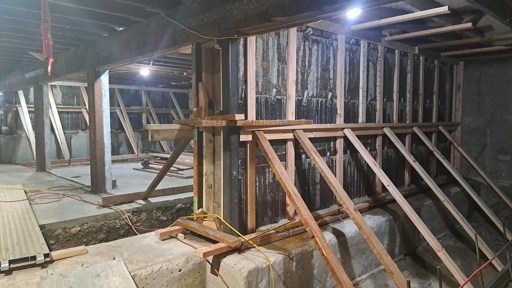- 18 Posts
- 22 Comments

 2·2 years ago
2·2 years agoBirdtray might be what you’re looking for. I’ve only used it on windows, but for me it gets thunderbird out of the way but able to be checked and used immediately.
I’ve only got a water resources/environmental practice exam that has been passed around a lot. There is a decent amount of rudimentary soil mechanics and foundations, that I actually think is getting removed for that specific exam in the new one. The new structure means it might be a choice of piecemealing old content based on the NCEES topics list, or buying brand new materials.
I’ll probably be sitting the exam a little under one year from now, so I’m planning on doing the former until early next year, then hopefully my employer will buy some newer materials, or handle a bit of the cost, or maybe a review course at a local uni.

 2·2 years ago
2·2 years agoJust yesterday I got a dell inspiron for this reason. It’s the “we have a laptop at home” macbook air IMO and I only logged into the OEM windows for the 5 min of checking out what’s new windows 11 before installing my OS of choice.
 2·2 years ago
2·2 years agooh yeah, I forgot I watched about half of that video last week. He is really thoroughly knowledgeable and I enjoy his videos a lot, but it felt like a bit of a litany of arguments which is why I quit watching. However, the seismic argument is huge to me. Saying ‘Masonry houses can kill you here’ is a pretty strong argument in my book, especially when dealing with the realities of economics and what’s actually affordable/what’s cheapest.
 8·2 years ago
8·2 years agoThis does a really good job of explaining the benefits of “stick” construction, even if he does get a little wrapped up in his hamburger analogy. I’m particularly interested in sharing it because of how many people online denigrate wood houses in the US, and I think this will show some of the real advantages of it as a construction choice.
 1·2 years ago
1·2 years agoThat’s just way too vague to tell one way or another, and I don’t want to fall for marketing. Most concrete is made of mostly local materials, since the sand and gravel is quarried locally, sometimes on the same site as the mixing plant
 3·2 years ago
3·2 years agoOne thing definitely lacking in the article and my brief look on their website is just… wtf even is the binder? Anything to truly replace portland cement will have to be non-proprietary and really well researched if they ever want it to take off.
 5·2 years ago
5·2 years agoJust find these types of scaled models amazing to see in real life.
And, of course, it’s actually being built. https://www.asce.org/publications-and-news/civil-engineering-source/civil-engineering-magazine/issues/magazine-issue/article/2023/07/zigzagging-weir-helped-solve-safety-issues-at-2-california-dams
And here are some videos on other physical models like this: https://www.youtube.com/watch?v=i70wkxmumAw
https://www.youtube.com/watch?v=GtUDGSmPd04
Finally, if you’re interested in the mathematics behind how we can do this and make comparable prototypes:

 1·2 years ago
1·2 years agodeleted by creator
 2·2 years ago
2·2 years agoI haven’t read it yet, but the journal article this blurb is about is currently open access. Sharing it because I absolutely love this type of thing. I knew someone in school who was doing similar research with accelerometers on vehicles to try and assess the stiffness of the whole span. I think I sounded weird when I told him this irl, but I literally like to go to sleep thinking about being able to make measurements so indirectly and passively.
 1·2 years ago
1·2 years agoSure are. I’m amazed how weird the picture ended up looking at that point, but I took another gander since I ended up there on my lunch break again. There are a couple of pieces of lumber run horizontally on the steel beam’s flange and the top chord of the truss is on top of those boards. I think it looks so funky because there are short pieces between each chord right at the very end
 1·2 years ago
1·2 years agoSo true. I’d think that’s about the standard we’re used to with passenger cars, safety systems mandatory to be installed, and usage enforced by policing. I hope that the majority of people causing these wrecks are drunk and disoriented, not malicious, and that just giving them a convenient option to get home would eliminate 90%+
 21·2 years ago
21·2 years agoObviously of note is the plumbed services manifold the Homeowner designed. He must have had a stinking absurd lot of money to throw at the house to start with, because I would have started out just trying to eliminate the need for the services. All electric appliances, roof drains off the side into a skirt of pea gravel at the base of the house, and maybe a holding tank for either water or sewer so that one or the other could be detaching from a “static” house position when the house it turned. That would be nowhere as luxurious and easy as this was (presented to be). Hope someone up to the maintenance purchases it and is a good steward

 2·2 years ago
2·2 years agoBeen using some free time at work to make an inventory of pipeline stream crossings and plan on making it a GIS feature class for regular maintenance. This was inspired by an encased sanitary sewer essentially becoming a low head dam (just eroded, not discharging sewage) in a homeowners back yard and we were unaware until someone called.
It’s mostly just been tracing the features so far, but I’m thinking about where to take it next. Thinking a good direction to go next will be to use the elevation model to try and find manholes in high slope areas and ditches so they can be identified for monitoring for erosion or I&I.
 1·2 years ago
1·2 years agoI was introduced to wrong way detection systems early in undergrad when some grad students were grabbing people to be test subjects in their simulator. Strikes me as such a hard problem because it’s trying to control the human factor, and it is pointed out that the majority of the crashes are caused by drunk drivers. Have to figure that this is another problem that increasing automation in cars will help solve along the way.
 2·2 years ago
2·2 years agoFelt like this compliments the Practical Engineering video from yesterday by showing that RO has its own difficulties beyond the cost and energy usage. I’ve heard about these brine disposal issues, especially for the huge coastal cities. Personally, I am of the mind that municipal water demand, ecology, and fisheries all have higher stakes in coastal water quality than the energy industry (green or not).
Second to that, I don’t know much about Hydrogen energy, but I had the understanding that electrolysis of water was net negative energy. I’m not sure if that was already counting RO treatment (figure it is cleaner with DI water), but if it wasn’t then that makes it even more of an energy loss. I’m often making the argument that transitional energy, from fossil fuels to renewable, is going to be a mishmash of half-working parts and deviation from the efficiency that we enjoy with a mature fossil fuels industry. I don’t think that’s an excuse to trip over ourselves and do a lot of the same things that oil companies did (destruction of entire ecosystems, getting in the way of the needs of residents, profiting from the results of public capital investment).
 2·2 years ago
2·2 years agoBrady does a good job breaking down why RO desalination is energetically and operationally much better than traditional distillation. Only thing I didn’t like that much was his discussion of salinity concentrations, as I feel like he built it down by defining what ppt meant relative to percentages, while I think that it being shown to the relative amounts of other dissolved solids like iron and hardness would show that sea water is an order of magnitude more laden with the dissolved solids. To me that is why RO membranes are absolutely miraculous despite the high energy requirements, because they can produce high quality fresh water from differing source water without there being much difference in each treatment process in the end. Running seawater through RO for desalination, versus well water removing hardness and nitrates would mainly differ on the pretreatment to remove suspended solids and then the proportion of reject water to permeate.
 1·2 years ago
1·2 years agoI gotta say that the 3d printed building thing is starting to look noticeably more serious than the mortar blob huts that I remember seeing a decade ago. It will be interesting to see if they find their niche and become widely used and affordable. The main thing is, the sitework will still need to be done by laborers and heavy equipment, so now the building itself is going to include even larger specialized equipment for the printer. Will normal laborers learn how to set up and mind these, or will there be another set of specialist operators created?
My understanding is there is emphasis in moving building construction to having most of the work done in a shop environment, and then the pieces all sent to the site and put together like legos. We’re suffering a bit for that right now, with simple precast concrete buildings having lead times of over one year. If this keeps up, it may become a case where the trade off between the higher quality (and aesthetic quality) of a precast building is an even trade-off with a less sturdy printed building. Cases when there is an emergency need, like replacing a controls building after a tornado.
 2·2 years ago
2·2 years agoI guess it does ultimately come to that for the strictest protections, and probably local EPAs are more in tune with the local hydrology so far as making regulations. However, it could raise a big question of “why bother?” if one state has stricter wetlands protections but has major tributaries discharging into the jurisdiction of states that do not have nearly as strong protections and thus have degraded water quality.














Surfside sticks in my mind so much because it happened in my first week on the job as an engineer. That was only two years ago, but it really feels like the pandora’s box of deferred maintenance is just starting to swing open.